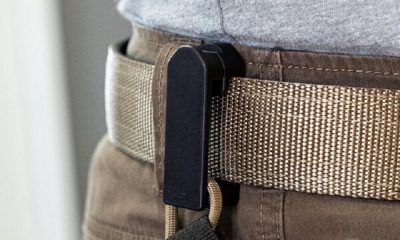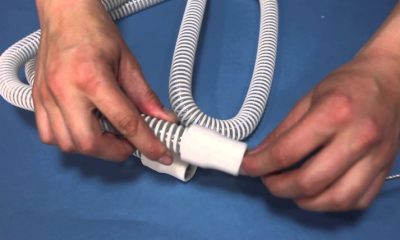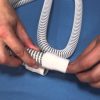Health & Beauty
Benefits and Importance of Using PPE in Healthcare
The demand for personal protective equipment soared in the early days of the pandemic. PPE, particularly medical masks, has become routine for people all around the world. But, it includes considerably more than just medical masks. Frontline health care and other essential personnel wear gowns, goggles, gloves, face shields, and other protective gear to protect themselves from contagious infections.
Whatever your duties as a medical practitioner are, you will almost certainly be compelled to wear the appropriate protective equipment. Disposable gloves, which can protect the hands and avoid skin contact with harsh chemicals, blood-borne pathogens, and other dangerous substances, are included as part of this equipment. Because most medical personnel operate with scalpels, surgical equipment, and needles, the gloves must be very puncture resistant.
Gloves
During exams and treatments, healthcare professionals must protect themselves and others from cross-contamination. This implies that gloves should be used while handling contaminated equipment, handling blood, bodily fluids, secretions, or excretions, and when patients require transmission-based precautions. The rising demand for quality medical disposable gloves in health care has resulted from increased awareness among healthcare professionals for their potential protection against many harmful bacteria.
But keep in mind that gloves do not substitute the need for appropriate hand hygiene before and after glove use. Gloves should be replaced when they get contaminated, especially when switching between patients or doing various operations on the same patient. Hands should always be decontaminated after removing gloves. Gloves are a one-time use item that should not be cleaned or reused.
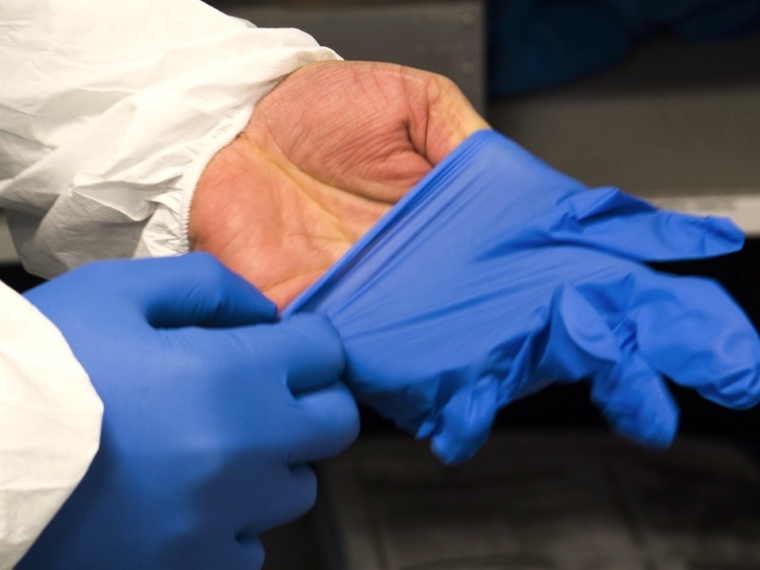
Different Types of Gloves and Their Materials
Exam gloves and surgical gloves are the two types of disposable medical gloves available in different sizes that you can buy in bulk. Medical exam gloves do not have to be of the greatest quality, and they are available in latex, vinyl, or nitrile, with different thickness levels to fit the demands of the personnel who use these gloves.
On the other hand, surgical gloves are worn by surgeons and other health workers who come into touch with blood, pathogens, sharp equipment, and other potentially dangerous items or chemicals. Surgical gloves of good quality are essential, so because of their great resilience and puncture resistance nitrile gloves are the most popular option among surgeons.
Latex is a better fit than vinyl and provides a better barrier against bacteria. They should be non-powdered and have the least amount of extractable protein possible. If a healthcare worker has a latex allergy, he or she should not use latex gloves. Similarly, when caring for a patient who is known to be latex-sensitive, an alternative should be offered. Because of the allergic risk to patients and workers, most healthcare environments are now latex-free.
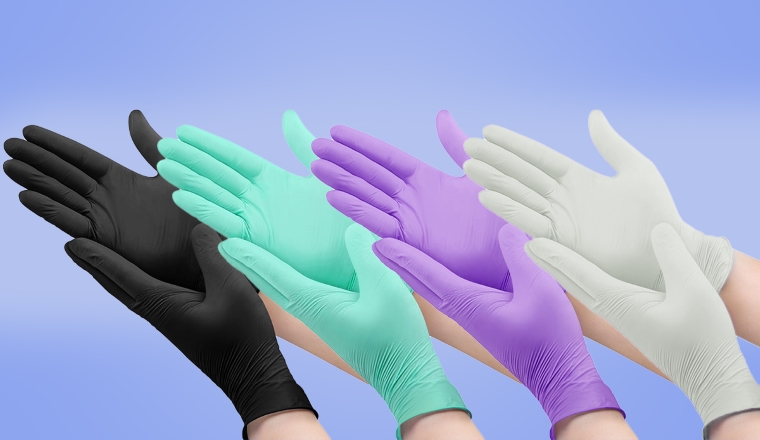
Manufactured entirely of nitrile, which is devoid of the allergens present in ordinary latex gloves, nitrile gloves are the most commonly used medical gloves where a latex-free environment is required. Nitrile is similar to natural rubber latex in terms of providing a biological barrier, but these gloves provide a lower level of elasticity.
Neoprene gloves contain qualities comparable to natural rubber latex and are frequently used as a substitute when a latex-free glove is required and manual dexterity is needed, such as during surgery. They are more costly than natural rubber latex gloves.
Gowns and Coveralls
Disposable plastic aprons and gowns are used to preserve uniforms and the overall clothing from moisture or soiling while providing direct patient care. Plastic aprons will be enough for conventional precautions in the vast majority of circumstances. Long-sleeved fluid-resistant gowns may be more suited in some circumstances where severe contamination of blood and bodily fluids is expected, such as maternity units, ED units, or when the patient requires a significant amount of direct care with close skin-to-skin contact. Gowns are not required to be sterile unless they are used for an aseptic operation such as central line insertion or in an operating room.
Face Masks
Face masks shield from spills and liquids in the area of the wearer’s nose, mouth, and respiratory system. They do not provide aerosolized particle protection and are not categorized as respiratory protective equipment. Although not all face masks are regulated as surgical masks, they are commonly referred to as such.
Surgical masks come in a variety of layers and abilities to protect you from liquid contact. These characteristics can influence how easily you can breathe through the surgical mask and how well it protects you. All members of the surgical team should wear them by covering their nose and mouth. If blood or bodily fluids are likely, a full-face visor can be used instead.
Respiratory Protection
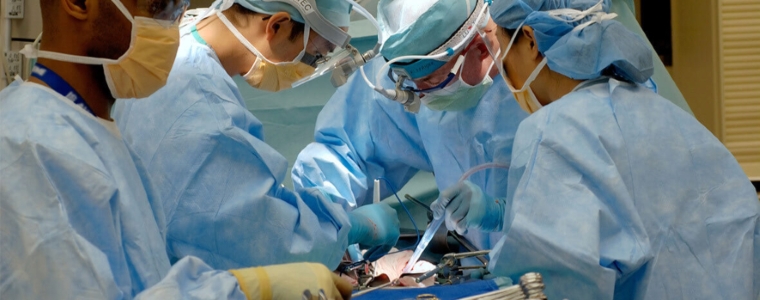
The goal of respiratory protection is to protect the healthcare workers against viruses spread by the air, including measles, chickenpox, and tuberculosis, as well as while performing aerosol producing operations on patients with suspected or known influenza or other respiratory tract illnesses.
Air-purifying respirators (APRs) and atmosphere-supplying respirators (ASRs) are the two primary forms of respiratory protection. Based on its design, each type of respirator gives a different amount of protection. APRs remove gases, vapours, aerosols, or a mixture of impurities from the air using filters, cartridges, or canisters, while ASRs respirators shield workers from a variety of airborne pollutants and, in certain situations, oxygen-deficient environments.
The most common types of air-purifying respirators are disposable filtering facepiece, elastomeric half-mask and full facepiece respirators and powered air-purifying respirators. The most widely available disposable filtering facepieces are N95 respirators, but other types such asN99, N100, P95, P99, P100, R95, R99, and R100 offer the same or better protection as an N95 respirator.
An N95 respirator is a piece of respiratory protection equipment that is designed to provide a very close face fit while also filtering airborne particles. It’s worth noting that the respirator’s edges are meant to make a seal around the nose and mouth.
Surgical N95 respirators are a subset of N95 filtering facepiece respirators (FFRs), sometimes known as N95s, and are extensively used in healthcare settings. And the most common types of atmosphere-supplying respirators are supplied-air devices, self-contained breathing apparatus and combination supplied-air and self-contained breathing apparatus.
Eye Protection and Visors
When there is a possibility of bodily fluids pouring into mucous membranes, such as the eyes or nose, eye and face protection must be used. Wearing goggles or a visor helps protect your eyes. Personal glasses are insufficient as a substitute. If reusable eye/face protection is used, it must be decontaminated according to the manufacturer’s instructions. After removing the apparatus, thoroughly disinfect your hands.
Writing for the blog since 2012, Chris simply loves the idea of providing people with useful info on business, technology, vehicles, industry, sports and travel – all subjects of his interest. Even though he sounds like quite the butch, he’d watch a chick flick occasionally if it makes the wife happy, and he’s a fan of skincare routines though you’d never have him admit that unless you compliment his impeccable skin complexion.

